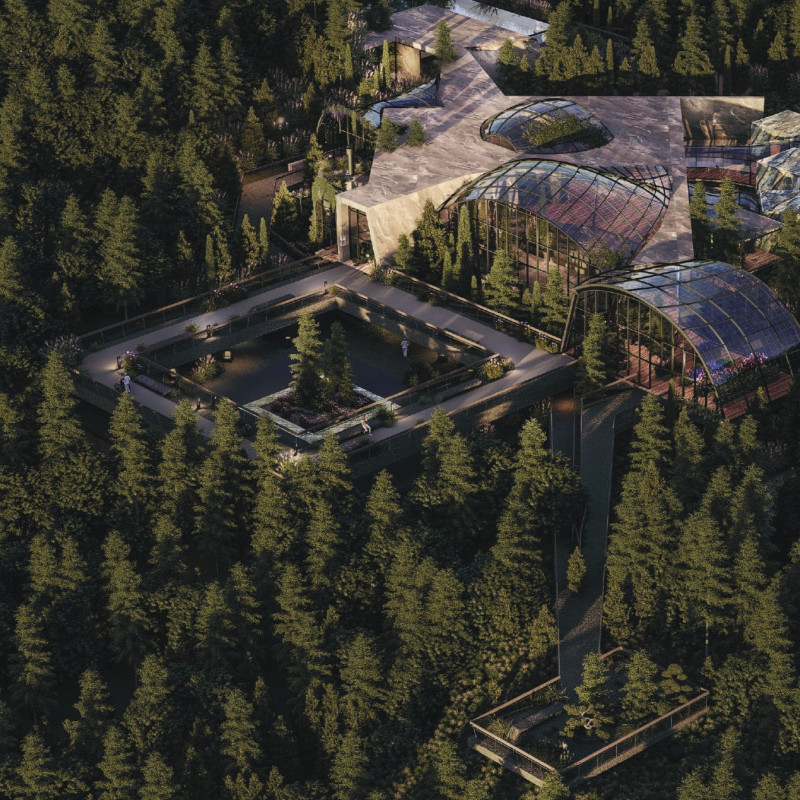5 key facts about this project
## Analytical Report: "Roots in Stone"
### Overview
Located in the Appalachian Mountains of Kentucky, the hospice "Roots in Stone" is strategically positioned between Paintsville Lake and Yatesville Lake State Parks. The design is intended to provide a tranquil environment for individuals and their families during the hospice journey, integrating architecture with the surrounding natural landscape to foster a space of reflection and comfort.
### Spatial Configuration
The structural layout is organized around a central hub that branches into various communal and private areas. This design promotes accessibility while maximizing views of the adjacent forests and lakes. Pathways within the facility mimic the form of tree roots, guiding occupants through the space and symbolizing life's journey. The arrangement carefully considers both solitude and communal interaction, essential for the well-being of patients and their visitors.
### Material Selection
Key materials used in the construction include marble, stone, and glass, each chosen for both aesthetic and functional properties. Marble serves as a structural element and flooring, establishing a tactile connection to the earth. Stone is integrated into walls and outdoor areas, providing a sense of permanence and protection. Extensive use of glass facilitates unobstructed views of the landscape, creating light-filled interiors that evolve with natural daylight, thereby enhancing the overall therapeutic environment.



















































